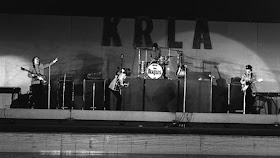 |
| Book jacket of Between the World and Me, by Ta-Nehisi Coates, 2015. |
 |
| The journalist and author Ta-Nehisi Coates. |
There is a racial crisis in America right now, as it becomes
clearer and clearer that we are not actually living in a “post-racial” America,
as some people had hoped after Barack Obama was elected in 2008. Incidents of
police brutality against young African American men have become all too commonplace
in the headlines over the last few years. Saint Paul, the city where I live,
was thrust into these headlines this past summer with the tragic death of
Philando Castile. Against the backdrop of this crisis, Ta-Nehisi Coates wrote
2015’s Between the World and Me, a
long letter to his 15 year old son, and a meditation about race in America.
Whether you agree with what Coates writes in the book or
not, Between the World and Me is an
extremely important book, one that deserves to be widely read by both black and
white readers. Coates tells his story of growing up in Baltimore, and how race
has defined and shaped his life.
I know that as a white person, or as Coates would write, “A
person who believes they are white,” I cannot fully understand what it’s like
to be black in America. My understanding of Coates’ book is inevitably colored
by my race.
Coates paints a bleak and depressing picture of race in
America, telling his son, “So you must wake up every morning knowing that no
promise is unbreakable, least of all the promise of waking up at all. This is
not despair.” (p.71) Well, it sounds pretty despairing to me.
There is a sad truth when Coates writes, “In America, it is
traditional to destroy the black body-it
is heritage.” (p.103) I agree with Coates’ depiction of race relations
throughout American history, but what I don’t agree with is Coates’ seeming insistence
that we are prisoners of the past, playing out the same rituals of oppression
time and time again. I saying seeming insistence because I don’t actually know
if Coates thinks we can move beyond racism or not. I suppose I just want to
have faith in the idea that we are making progress towards greater equality in
this country. If we don’t have faith in that idea, then how do you avoid
nihilism and despair?
Coates name-checks Malcolm X many times in the book, and it’s
clear that Malcolm is an intellectual hero of his, but since all of the Malcolm
X quotes are from the time he was involved with the Nation of Islam, I wondered
what Coates would say about the Malcolm X of 1964 and 1965 who believed in
integration, rather than black separatism?
Coates does not give the reader any answers in Between the World and Me, he doesn’t
prescribe any solutions. He offers the reader no succor, only a list of
ever-growing offenses. I’m okay with that-not every book needs to have the
answers for the difficult and complicated questions it raises. And the
questions that Between the World and Me raises
are essential ones for America in 2016.





